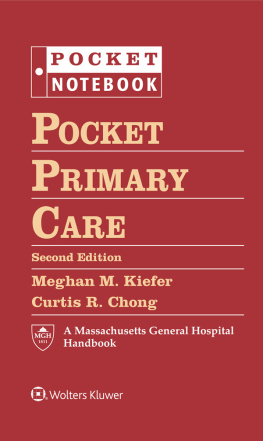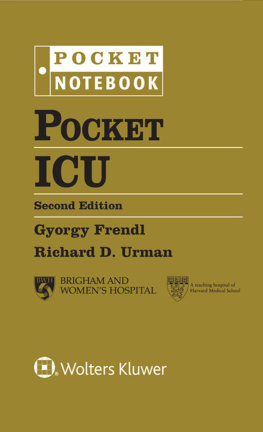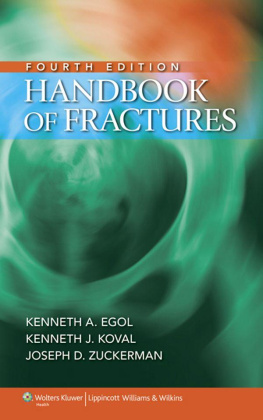Text reads, Three-way stopcock open, saline meniscus in proximal tube, insert needle, increase pressure in syringe until meniscus moves, read pressure. Manometer and limb must be at the same level.
The volar or carpal tunnel release incision is in the center of the palm, hypothenar release incision is in the side of the palm, and the finger release incision is along the right side of the bent finger. Incision, extensor hood over phalanx, and volar neurovascular bundle are labeled in the cross-section image.
Volar forearm fasciotomy incision is from the lower palm, along the inner side of the forearm, till the elbow. Dorsal forearm fasciotomy incision is along the outer side of the forearm.
The table shows five columns headings: drug, half-life, hold or elective, reversal agent, and restart. Row entries are as follows. Row 1: Warfarin; 36 to 72 hours; 4 days and INR less than 1.3, controversial; vitamin K, FFP or PCC; 1 day. Row 2: Dabigatran; 12 to 17 hours; 2 to 3 days; Idarucizumab; rapid onset 2 to 3 days. Row 3: Rivaroxaban; 5 to 9 hours; 2 to 3 days; PCC; rapid onset 2 to 3 days. Row 4: Apixaban; 8 to 12 hours; 2 to 3 days; PCC; rapid onset 2 to 3 days. Row 5: Edoxaban; 10 to 14 hours; 2 to 3 days; PCC; rapid onset 2 to 3 days. Row 6: LMWH; 3 to 5 hours; bid, no evening dose, qd, half dose in AM, no evening dose; protamine, partially effective; 48 to 72 hours.
The table shows the following column headings: finding, root lesion, plexus lesion, focal entrapment, axonal polyneuropathy, and demyelinating polyneuropathy. Row entries are as follows. Row 1: Motor nerve amplitude; positive or negative decrease; decrease focal; positive or negative decrease, decrease diffuse; positive or negative decrease. Row 2: Sensory nerve amplitude; decrease focal; positive or negative decrease, decrease diffuse; positive or negative decrease. Row 3: Distal latency: Normal; normal; increase focal; normal; increase diffuse. Row 4: Conduction velocity: Normal; normal; decrease focal; normal; increase diffuse. Row 5: Fibrillations; positive acute; positive acute; positive or negative severe; positive; positive or negative. Row 6: Large polyphasic MUAPs; positive chronic; positive chronic; positive or negative severe; positive; positive or negative.
The table shows five column headings: medication, product, dosage, route, and maximum. All doses are milligrams per kilogram unless otherwise noted. Row entries are as follows. Row 1: Acetaminophen drops; 80 milligrams per 0.8 milliliters; 10 to 15 milligrams per kilogram q46h; po; 5 dose per day, less than or equal to 4000 milligrams per dose. Row 2: Acetaminophen elixir; 160 milligrams per 5 milliliters; 10 to 15 milligrams per kilograms q46h; po; 5 dose per day, less than or equal to 4000 milligrams per dose. Row 3: Acetaminophen chew; 80 milligrams; 10 to 15 milligrams per kilogram q46h; po; 5 dose per day, less than or equal to 4000 milligrams per dose. Row 4: Acetaminophen tabs; 325 milligrams; 10 to 15 milligrams per kilogram q46h; po; 5 dose per day, less than or equal to 4000 milligrams per dose. Row 5: Aspirin; 81 milligrams; 10 to 15 milligrams per kilogram q46h; po; no data. Row 6: Ibuprofen; 100 milligrams per 5 milliliters; 5 to 10 milligrams per kilogram q68h; po; 40 milligrams per kilogram per dose. Row 7: Diazepam; no data; 0.12 to 0.08 milligrams per kilogram per dose divided tid4 times per dose 0.04 to 0.2 q24h; po per pr IV or IM; 0.6 per 8 hours. Row 8: Meperidine; no data; 1 to 1.8 milligrams per kilogram; IV or SC or po slow IV; no data. Row 9: Morphine; no data; 0.1 to 0.2 milligrams per kilogram, 0.1 to 0.2 milligrams per kilogram; IV or IM or SC po; 15 milligrams q4h.
The table shows five column headings: medication, product, dosage, route, and maximum. All doses are milligrams per kilogram unless otherwise noted. Row entries are as follows. Row 1: Hydroxyzine; 10 milligrams per 5 milliliters; 0.5 4 times per day; po; no data. Row 2: Diphenhydramine; 12.5 milligrams per 5 milliliters 25, 50 milligrams; 5 milligrams per kilogram per dose Divided 4 times per dose; po IV or IM; 300 milligrams per day.
The table shows six column headings: level, hip, knee, feet, orthosis, and ambulation. AFO is ankle foot orthosis, HKAFO is hip ankle foot orthosis, and KAFO is knee ankle foot orthosis. Row entries are as follows. Row 1: L1; external rotation or flexion; no data; equinovarus; HKAFO; non. Row 2: L2; adduction or flexion; flexed; equinovarus; HKAFO; non. Row 3: L3; adduction or flexion; recurvatum; equinovarus; KAFO; household. Row 4: L4; adduction or flexion; extension; cavovarus; AFO; household. Row 5: L5; flexion; limited flexion; calcaneovalgus; AFO; community. Row 6: S1; no data; no data; no data; shows; near normal. L2, L3, and L4 have increased risk of hip dislocation.
In a normal foot, the big toe is angled, while the other toes are aligned in a vertical line. In metatarsus adductus, all toes are bent toward the medial side by a small angle. In talipes equivocarus, all toes are bent toward the medial side by a large angle.
The table shows five column headings: syndrome, inheritance, intelligence, cornea, and urinary excretion. Row entries are as follows. Row 1: MPS 1, Hurlers, most severe; Autosomal recessive; Mental retardation; Cloudy; Dermatan or heparin sulphate. Row 2: MPS two, Hunters; X-linked recessive; Mental retardation; Clear; Dermatan or heparan sulphate; Row 3: MPS three Sanfilippos; Autosomal recessive; Mental retardation; Clear; Heparan sulphate. Row 4: MPS four, Morquios most common; Autosomal recessive; Normal; Cloudy; Keratan sulphate.
The table shows the following column headings: dysplasia, error, mode, zone, clinical findings, and radiologic features. Row entries are as follows. Row 1: Achondroplasia, most common form; fibroblast growth factor receptor 3; AD or SM; E; abnormal facies and spine inhibition of endochondral ossification; lumbar stenosis, bow legs, at risk for atlantoaxial instability and spinal stenosis. Row 2: Pseudoachondroplasia; cartilage oligomeric protein or COMP; AD; E; normal facies, short limbed, ligamentous laxity, atlantoaxial instability, scoliosis, early OA; metaphyseal flaring, delayed epiphyseal ossification, hypoplastic dens. Row 3: SED, congenital; type 2 collage; AD or SM; E; flattened facies; platyspondyly, delayed epiphysis. Row 4: SED, tarda; type 2 collagen; XR; E; kyphosis, hip pain; platyspondyly, delayed plastic dens. Row 5: Chondrodysplasia punctata; no data; AD AR, fatal; P; flat facie; stippled epiphysis. Row 6: Kniest dynfrome; type 2 collagen; AD; P; detached retina, scoliosis, cleft palate; dumbbell femurs, osteopenia or hypoplasia. Row 7: Schmid metaphyseal chondrodysplasia; type X collage; AD; M; coxa vara, wide eyes, bow legs, waddling gait; flared metaphysis, wide irregular physes, bowed legs. Row 8: Jansen metaphyseal chondrodysplasia; PTH-related peptide receptor; AD; M; severe limb shortening, prominent forehead micrognathia; flared metaphysis, wide irregular physes, bowed legs.
The table shows the following column headings: dysplasia, error, mode, zone, clinical findings, and radiologic features. Row entries are as follows. Row 1: Multiple epiphyseal dysplasia; 1 comp, 2 type 9 collagen; AD; E; mild dwarfing, delayed ambulation, waddling gait; irregular epiphyseal ossification. Row 2: Dysplasia epiphysealis hemimelica, Trevors; no data; no data; M; bow legs; hemienlarged epiphysis. Row 3: Preogressive diaphyseal dysplasia; no data; AD; D; delayed walking; and symmetric cortical thickening. The abbreviations are as follows. AD, autosomal dominant; AR, autosomal recessive; OA, osteoarthrosis; SED, spondyloepiphyseal dysplasia; SM, spontaneous mutation; XR, X-linked recessive; D, diaphyseal; E, epiphyseal; M, metaphyseal; P, physeal.
The table shows the following column headings: dysplasia, error, inheritance, zone, clinical findings, and radiologic features. The abbreviations are as follows. AD, autosomal dominant; AR, autosomal recessive; OA, osteoarthrosis; SED, spondyloepiphyseal dysplasia; SM, spontaneous mutation; XR, X-linked recessive; D, diaphyseal; E, epiphyseal; M, metaphyseal; P, physeal. Row entries are as follows. Row 1: Mucopolysaccharidosis; no data; AR, XR; P, corneal changes, urinary sugars, atlantoaxial instability; thick bone, bullet-shaped metacarpals. Row 2: Diastrophic dysplasia; sulfate transporter; AR; P; short limbs and stature, kyphoscoliosis, cleft palate, cauliflower ears, hitchhiker thumb, right clubfoot; kyphoscoliosis, odontoid hypoplasia. Row 3: Cleidocranial dysplasia; no data; AD; M; absent clavicles, wide cranial sutures; delayed physeal closures.
Next page




